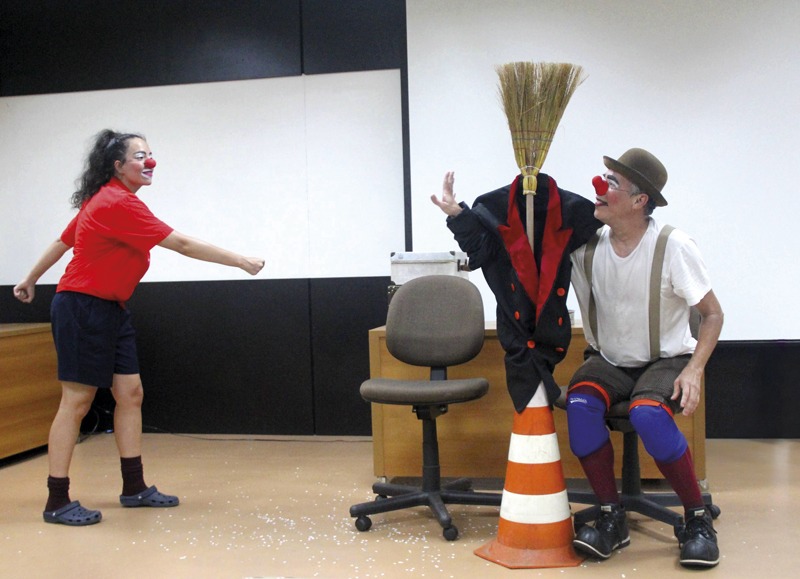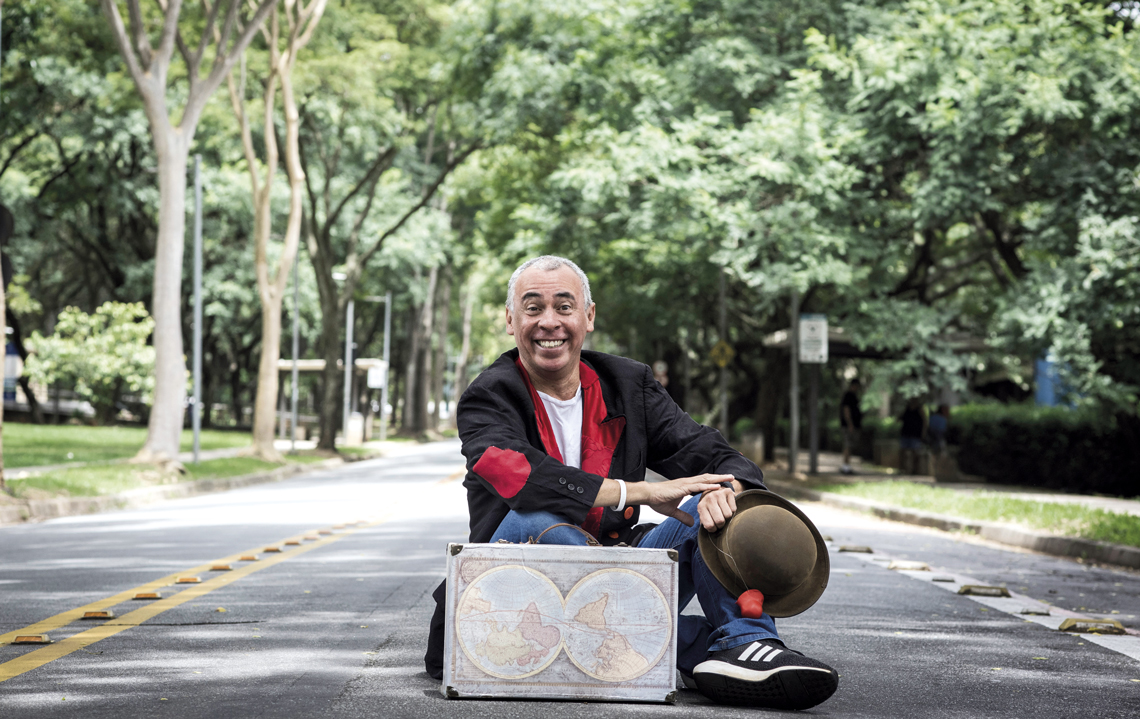I’ve always liked movement. As a child, I was involved in sports and theater, but because I was so good at exact sciences, I was unsure whether to study physics, performing arts, or physical education. I ended up choosing the exact sciences. I began studying physics at the Federal University of Rio Grande do Norte [UFRN] in 1992 and did research with a fellowship from the CAPES [Brazilian Federal Agency for Support and Evaluation of Graduate Education] Special Training Program. The following year, alongside my degree, I joined Shakespeare’s Clowns, a theater group in Natal.
After completing my physics degree, I studied seismology for my master’s degree in geodynamics and geophysics at UFRN. I was inspired by a memory I had of an earthquake in 1986, when I was 15 years old. I remember being on the second floor of my school at the time of the tremor, which my classmates, teachers, and the other staff all felt. The 5.1 magnitude quake became known as the João Câmara earthquake, named after a city about 80 kilometers from where I lived in Natal.
At the end of my second year as a member of Shakespeare’s Clowns, when we were putting on the group’s first major show, I had to make the choice between science and art. It was 1998 and my master’s advisor, physicist Mario Koechi Takeya, asked me to decide between one or the other. I don’t blame him for having that attitude, and for the good of my research—in which we were analyzing seismic data at the Tucunduba dam in Ceará—I left the theater company two months before the premiere of The Shrew of Nothing, a satirical take on the classic The Taming of the Shrew, by William Shakespeare [1564–1616], directed by Sávio Araújo.
In 1999, I started my PhD at the Institute of Astronomy, Geophysics, and Atmospheric Sciences of the University of São Paulo [IAG-USP], supervised by Professor Marcelo Assumpção. For my research, we studied the structure of the Earth’s crust in Southeast and Central-West Brazil. In 2001, during a relatively quieter year of my PhD, I took part in a workshop at the USP Theater taught by actors Edgar Castro and Georgette Fadel, two masters of their craft who had a great influence on my career. Around the same time, I joined the Movimento Theater Group in São Paulo, where I performed in three shows over a two-year period with the company.
I returned to Natal in 2004 to do a postdoctorate at UFRN, where I also attended the Clown Art workshop run by Felícia Castro and Flavia Marco Antônio at the Experimental Theater Center. In 2006, I successfully applied to be a professor at the Geosciences Institute of the University of Brasília [UnB]. As a new professor, I had a lot of work on my plate, so I stepped away from the stage for a while. But I returned to the theater with newfound enthusiasm in 2015. The following year, I took another clowning workshop, this time led by actor and director José Regino, who I consider my grand master. It was there, in fact, that I really fell in love with the role and my first clown was born, although he was not yet Dr. Earthquake.
At that moment, absurd conspiracies like the flat Earth theory were gaining traction on social media. I was worried. I didn’t know how people might be impacted by these strange ideas, so I had the idea of making fun of the subject. Every clown has their own shtick, something unusual about them. In my case, it is my character’s connection with science that creates surprise. The interesting thing is that science takes great care to avoid errors; when publishing a discovery or talking to the press about a seismic event, for example. Making mistakes is something unthinkable for scientists—and rightly so. Clowns, however, do the opposite: they make fun through mistakes and create situations through which spectators can think about things in a different way.

Personal archiveFrança as Dr. Earthquake, alongside Dr. MagnetitePersonal archive
Based on this idea, we created The Earth is flat! Now what?, a show for people of all ages that premiered in Brasília in 2019. I was Dr. Earthquake, and I noticed that at first, the audience was mostly academics, made up of my professional colleagues and students. I also noticed that the jokes did not land so well with lay spectators. I decided to change the language and the approach according to the environments in which I was performing, until I found a way to share Dr. Earthquake’s message with a wider audience.
I actually first appeared as Dr. Earthquake a little earlier, during a European Geosciences Union [EGU] conference in Vienna, Austria, in 2019. I went to the event dressed as a clown and waited for my turn to present at a five-minute explanation session. I joined a specific group of artists and scientists involved in similar endeavors to talk about how art can help science and vice versa. I’m used to exhibiting my work at international events, but this was without a doubt the one that had the biggest impact on my life, with the biggest audience and most attention I’ve ever had.
Last year, I became a professor at IAG-USP, moving to São Paulo with my wife, who is a business administrator. We have two children: Gabriel, 23, who likes music and studies computer science at UnB, and Julia, 17, who dances with a dance company in Brasília, but has just passed an audition in São Paulo.
I am currently a member of the Observatory Theater Company, a group founded five years ago. In November, we did a show at a party for IAG-USP employees and their families. I shared the stage with Dr. Magnetite, a clown created by geophysicist Janine Araujo do Carmo of the Leopoldo Américo Miguez de Mello Center for Research, Development, and Innovation [CENPES-Petrobras].
Since February, I have been leading the Scientific Clowning Workshop alongside Julia Bertollini, who plays the clown Catarina, and Pedro Caroca, who plays the clown Seu Cocó. The objective of this IAG-USP course, aimed at high school teachers, university professors, and undergraduate and graduate students, is to teach people how to communicate scientific concepts in a simple and engaging way.
As an actor, clown, and director, I have put on 17 shows and a feature-length film to date. Even though I dedicate as much of my time as I can to the performing arts, I am a committed scientist and a CNPq [Brazilian National Council for Scientific and Technological Development] level 1C research fellow. In the classroom, I use traditional teaching methods, but I like to maintain a little bit of humor. I always say that the partnership between science and art is a serious thing. In addition to serving as an important channel for scientific communication, art helps to break down the excessive formality of academia. I hope this idea will spread and grow.
Republish